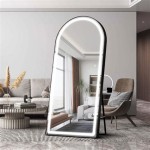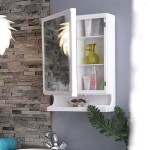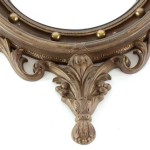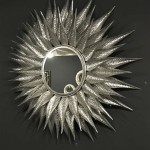Cutting a Mirror with an Angle Grinder
Cutting a mirror with an angle grinder can be an effective method for achieving custom shapes and sizes, but it requires careful preparation and execution to avoid damaging the mirror and ensuring personal safety. This process is not recommended for beginners and should only be undertaken by individuals with experience using power tools and a thorough understanding of safety procedures.
Before beginning, it's crucial to assess the type of mirror being cut. Standard mirrors typically consist of a thin layer of reflective silvering on the back of a sheet of glass. Specialty mirrors, such as those used in telescopes or scientific instruments, may have different constructions and require specialized cutting techniques. This guide focuses specifically on cutting standard glass mirrors.
The selection of the appropriate angle grinder and cutting disc is paramount. A variable-speed angle grinder provides greater control over the cutting speed, which is critical for preventing excessive heat buildup that can crack or shatter the mirror. The recommended disc for cutting glass or mirrors is a diamond blade specifically designed for this purpose. These blades are typically thin and feature a continuous rim, as opposed to segmented rims used for cutting other materials. The continuous rim minimizes chipping and provides a cleaner cut.
Preparing the mirror for cutting involves thorough cleaning and marking. Any dirt or debris on the mirror's surface can interfere with the cutting process and potentially scratch the glass. Clean the mirror with a glass cleaner and a lint-free cloth. Once clean, carefully mark the desired cutting line with a permanent marker. A straight edge or template can assist in achieving accurate and precise lines.
Safety precautions are of utmost importance when cutting a mirror with an angle grinder. Eye protection is mandatory, as small shards of glass can be propelled at high speeds during the cutting process. A face shield provides additional protection. Gloves should be worn to protect hands from sharp edges and glass fragments. A dust mask or respirator is also recommended to prevent inhalation of glass dust. Working in a well-ventilated area is essential to minimize dust exposure.
The cutting process should proceed slowly and steadily. Avoid forcing the angle grinder through the mirror, as this can cause the glass to crack. Instead, let the diamond blade do the work. Maintain a consistent pressure and guide the grinder along the marked line. Keep the blade perpendicular to the mirror's surface to achieve a clean, straight cut. Dipping the blade in water periodically can help cool the glass and reduce the risk of cracking, though this requires extra care and attention to electrical safety.
Supporting the mirror properly during the cutting process is crucial to prevent breakage. Ideal support involves placing the mirror on a flat, stable surface with the cutting line positioned just off the edge of the support. This allows the cut portion of the mirror to break away cleanly without stressing the remaining piece. Padding the support surface with a soft material, such as a blanket or thick towel, can further protect the mirror from damage.
After completing the cut, carefully inspect the edges of the mirror for any sharp or jagged areas. These can be smoothed using fine-grit sandpaper or a specialized glass grinding tool. Handle the cut edges with caution to avoid injury. Dispose of the glass fragments safely, wrapping them in thick paper or cardboard and labeling them clearly to prevent accidental injury to waste handlers.
Alternative methods to cutting a mirror include using a glass cutter and running pliers, but these methods are generally more suitable for straight cuts and thinner glass. An angle grinder offers greater versatility for curved cuts and thicker mirrors, but it requires more skill and attention to safety.
Different types of glass may require slight adjustments to the cutting process. Tempered glass, for instance, cannot be cut using standard methods and will shatter if subjected to localized stress. Laminated glass, commonly used in windshields, requires specialized tools and techniques to cut through the multiple layers. Always identify the type of glass being cut before proceeding.
Practicing on scrap pieces of glass before attempting to cut a valuable mirror is highly recommended. This allows individuals to familiarize themselves with the angle grinder, the feel of the diamond blade against the glass, and the necessary control for achieving clean cuts. Practice also helps build confidence and reduces the risk of making costly mistakes.
While this guide provides a comprehensive overview of cutting a mirror with an angle grinder, it's essential to remember that practical experience is invaluable. Observing experienced professionals and seeking expert advice can further enhance one's understanding of this process and contribute to safer and more effective mirror cutting.

Diamond Cut Off Wheel I Jijy M J Glass Technician Tools
How To Cut Convex Futura Mirrors Replace Broken Ones

How To Achieve A Mirror Finish On Stainless Steel Norton Abrasives Middle East

What Can You Use To Cut Mirror How Ready Diy

6 Angle Grinder Uses All Diyers Should Know

China 100mm Professional Angle Grinder Suppliers Whole List Workpro

Dewalt 13 Amp 7 In 8 000 Rpm Medium Angle Grinder Dw840 The Home Depot

Glass Cutting Disc Diamond Marble Saw Blade Ceramic Tile Jade Special Polishing Sharp Brazing Temu South Korea

Let The Job Determine Sd

Let The Job Determine Sd








